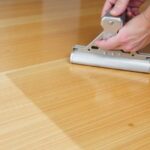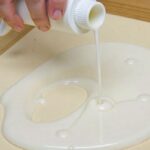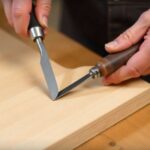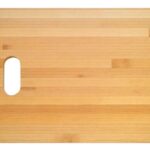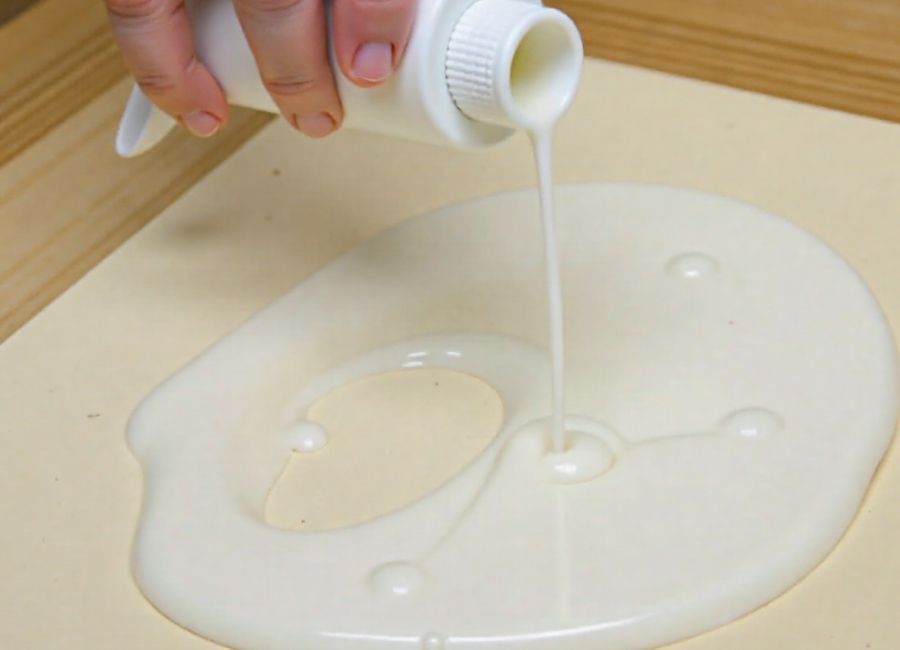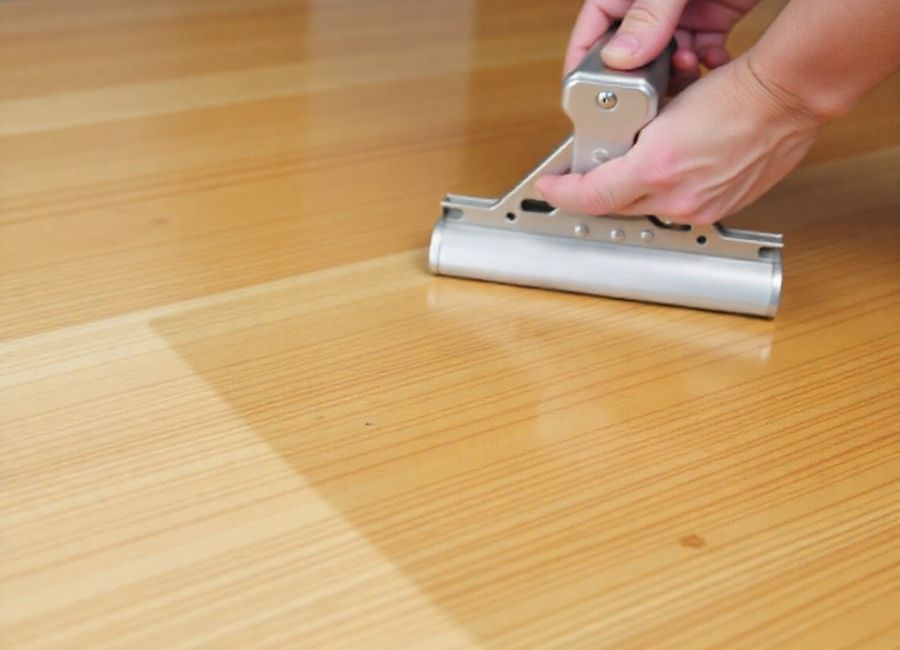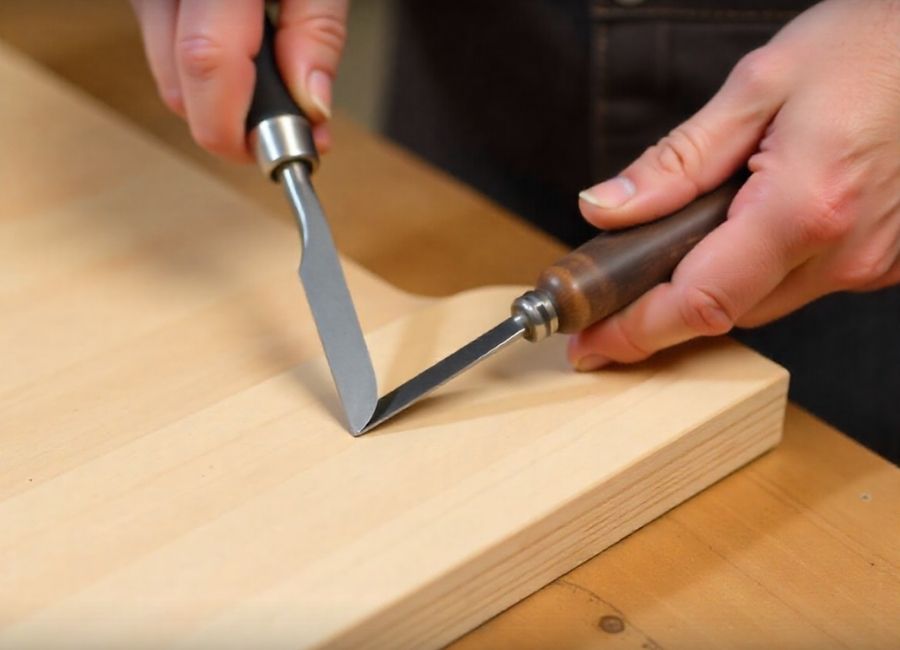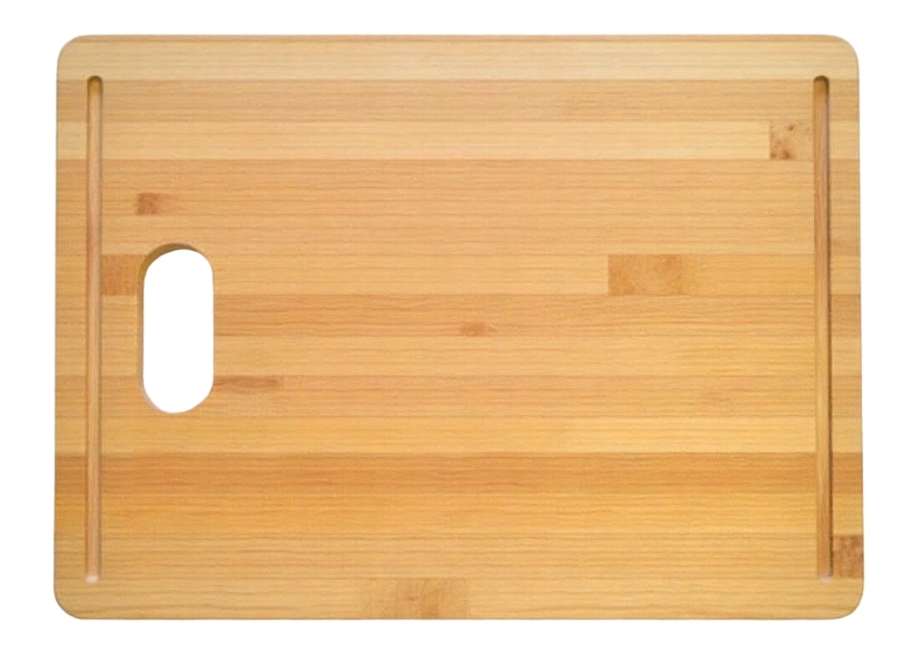Epoxy is a strong and versatile adhesive good for crafts and repairs, but this strength becomes a challenge when making mistakes. Even fully cured epoxy can be removed with the right techniques and patience.
This guide covers the best ways to remove hardened epoxy from wood, concrete, plastic, and metal. We’ll show heat-based methods and chemical solutions, so you can handle epoxy mishaps without harming the surface.
Safety First: Preparing for Epoxy Removal
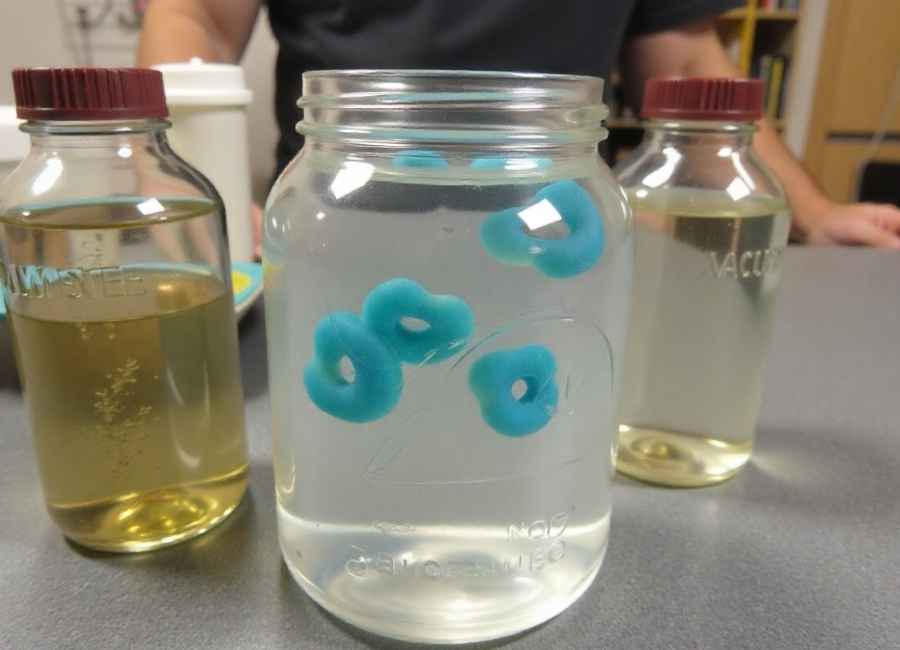
Before you begin, it’s crucial to prepare your workspace and yourself. Chemical removers and the fumes produced by heating epoxy can be hazardous.
- Ventilation is Key: Always work in a well-ventilated area. Open windows and doors, and use a fan to circulate air.
- Personal Protective Equipment (PPE): Protect yourself by wearing safety goggles to shield your eyes from splashes and debris, chemical-resistant gloves (nitrile or butyl are good choices) to protect your skin, and a respirator if you are working with strong chemicals or in a confined space.
- Protect Surrounding Areas: Cover any nearby surfaces you don’t want to get damaged with plastic sheeting or a drop cloth.
Method 1: Using Heat to Soften Epoxy
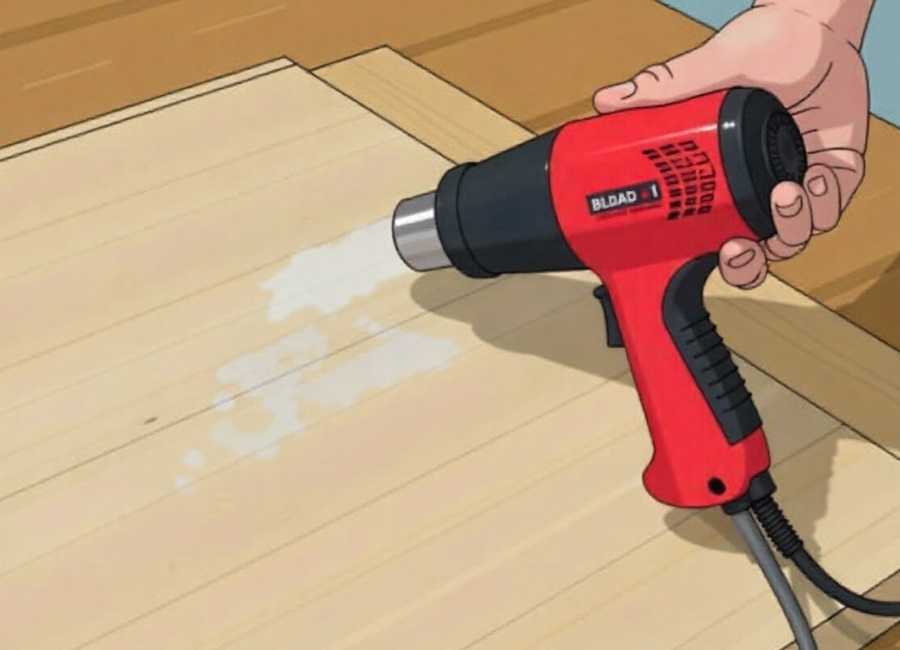
For many surfaces, especially those sensitive to chemicals, heat is the best first option. Applying heat softens the epoxy, making it pliable and easier to scrape away. This method is most effective for thicker layers of epoxy.
Tools You’ll Need:
- Heat gun or a powerful hairdryer
- Plastic or metal scraper
- Safety gloves and goggles
Step-by-Step Instructions:
- Apply Consistent Heat: Hold the heat gun about two to three inches away from the epoxy. Keep the gun moving continuously to heat the area evenly and avoid scorching the surface underneath, especially on wood.
- Watch for Softening: After a minute or two, the epoxy will start to soften and become more flexible. You may see a slight change in its appearance.
- When the epoxy is soft, use a scraper to lift it off. Use plastic on delicate surfaces to avoid scratches; use metal on tougher materials.
- Repeat as Needed: You may need to reheat and scrape the area multiple times to remove all of the epoxy. Work in small sections for the best results.
Method 2: Using Chemicals to Dissolve Epoxy
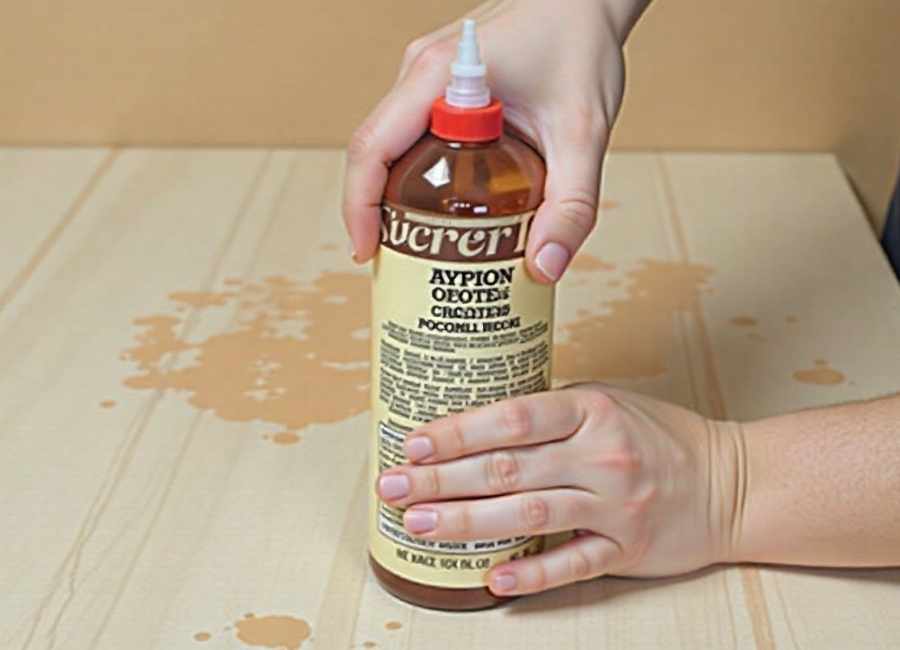
If heat doesn’t work or isn’t suitable, chemical removers are the next step. These products are designed to break down the chemical bonds of the epoxy, turning it into a gel-like substance that can be wiped away.
Solvents and Removers:
- Acetone: Commonly found in nail polish remover, pure acetone is effective for smaller spills on non-porous surfaces like metal and some plastics.
- Isopropyl Alcohol (99%): Can be used for small, fresh spills and is less aggressive than acetone.
- Commercial Epoxy Removers: For stubborn, fully cured epoxy, a specialized product is your best bet. These often contain chemicals like methylene chloride or N-Methyl-2-pyrrolidone (NMP) and are very powerful.
Step-by-Step Instructions:
- Test in a Small Area: Before applying any chemical to the entire surface, test it on a small, inconspicuous spot to ensure it doesn’t cause damage or discoloration.
- Apply your solvent with a cloth or cotton ball. For larger areas, pour it on or use a brush as directed.
- Let It Sit: Cover the area with plastic wrap to prevent the solvent from evaporating too quickly. Allow it to sit for the time recommended by the product’s instructions, which can range from 15 minutes to several hours.
- Once the epoxy softens, scrape away the residue. Wipe clean with soap and water to remove chemicals.
Surface-Specific Removal Guides
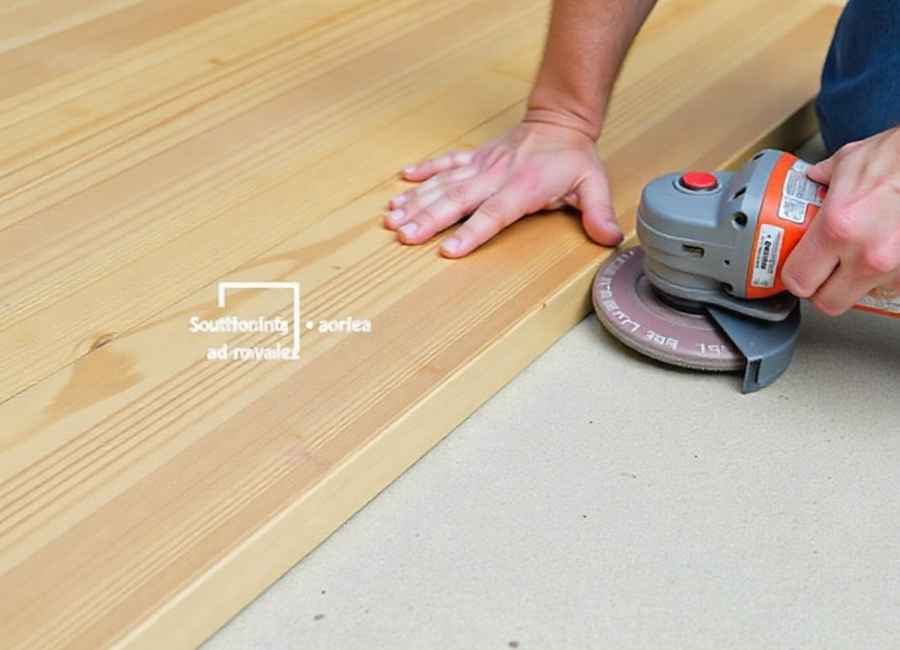
Different materials require different approaches. Here’s how to handle epoxy on some of the most common surfaces.
How to Remove Cured Epoxy from Wood
Wood is porous and can be easily damaged, so start with the gentlest method.
- Heat the epoxy on the wood until soft, then scrape away carefully with a plastic scraper to avoid damage.
- Sanding: If a thin layer or residue remains, you can sand it off. Start with a medium-grit sandpaper (around 120-grit) and finish with a fine-grit sandpaper (220-grit or higher) to restore a smooth surface.
- Chemicals: Use chemicals as a last resort. Acetone can damage many wood finishes, so test it carefully.
How to Remove Cured Epoxy from Concrete
Concrete is durable, giving you more aggressive removal options.
- Commercial epoxy removers work well on concrete. Apply, let sit, then scrape softened epoxy away.
- For thick epoxy on concrete, use a grinder with a diamond cup wheel. Wear safety gear.
How to Remove Cured Epoxy from Plastic or Metal
Non-porous surfaces like plastic and metal are generally easier to clean.
- Acetone removes small spills on metal. On plastic, test first or use isopropyl alcohol as a safer option.
- Heat: A heat gun can be used on most metals. Use caution with plastic, as too much heat can cause it to warp or melt.
- Scraping: Once softened by heat or chemicals, the epoxy should lift off easily with a plastic scraper.
Final Thoughts: Working Smarter with Resin
Understanding the properties of the materials you work with is fundamental to becoming a better craftsperson. Knowing that acetone won’t dissolve cured epoxy but will soften it significantly is a valuable piece of information to have in your back pocket. It provides a practical solution for cleaning tools and salvaging components that might otherwise be considered lost causes.
While this experiment focused on acetone, other harsh chemicals like MEK (Methyl Ethyl Ketone) might produce similar or slightly stronger effects, but they are also unlikely to dissolve cured epoxy fully. The takeaway is that once epoxy has cured, it’s a remarkably resilient material. Your best bet is always to prevent spills and protect your workspace, but for those times when things go awry, a little bit of chemical knowledge can go a long way.
Your Next Steps
Start with gentle methods and work up to stronger ones to avoid damage. Always use protective gear and work in a ventilated area. These techniques help you remove epoxy without frustration.

